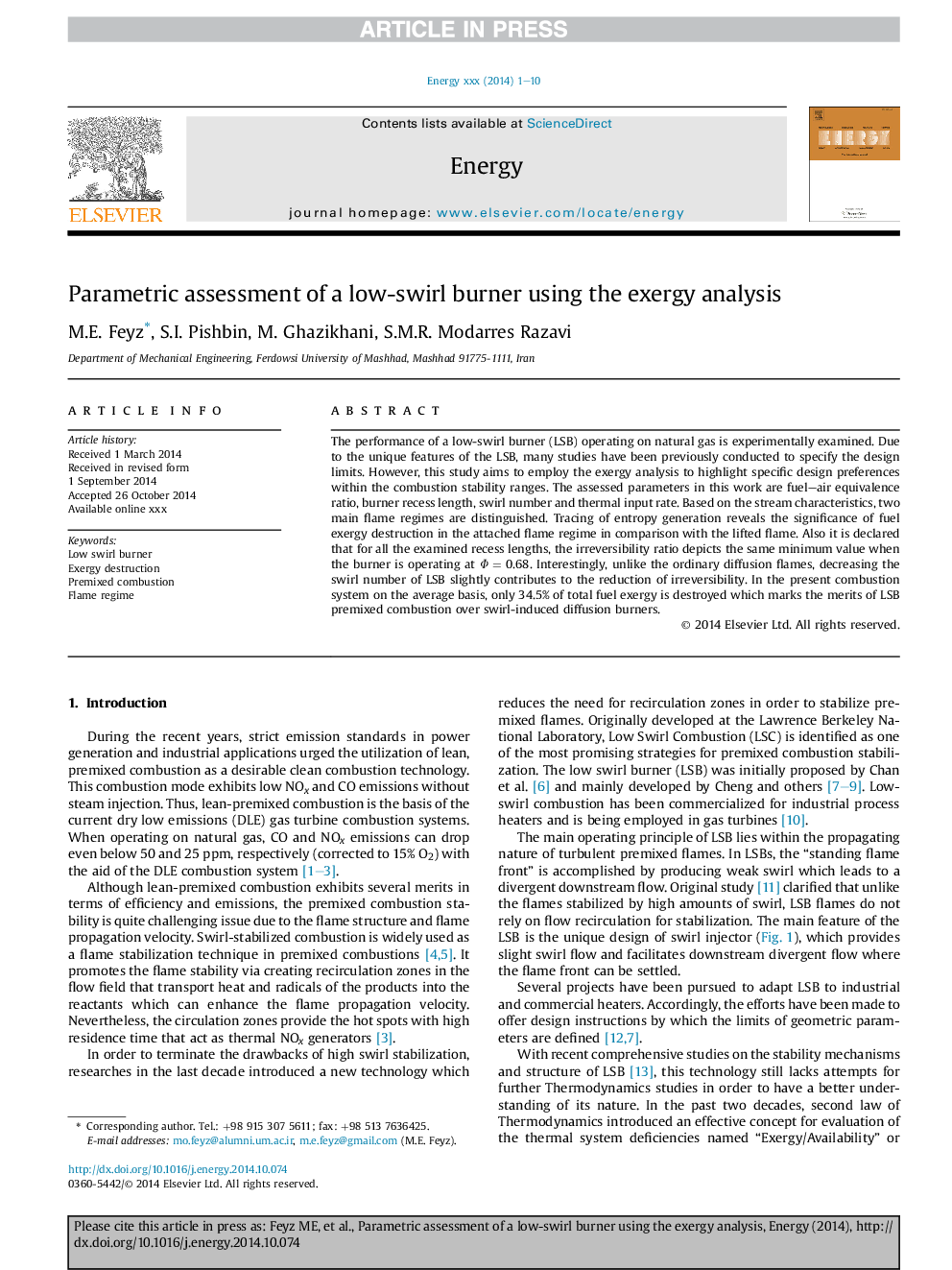| Article ID | Journal | Published Year | Pages | File Type |
|---|---|---|---|---|
| 8075782 | Energy | 2015 | 10 Pages |
Abstract
The performance of a low-swirl burner (LSB) operating on natural gas is experimentally examined. Due to the unique features of the LSB, many studies have been previously conducted to specify the design limits. However, this study aims to employ the exergy analysis to highlight specific design preferences within the combustion stability ranges. The assessed parameters in this work are fuel-air equivalence ratio, burner recess length, swirl number and thermal input rate. Based on the stream characteristics, two main flame regimes are distinguished. Tracing of entropy generation reveals the significance of fuel exergy destruction in the attached flame regime in comparison with the lifted flame. Also it is declared that for all the examined recess lengths, the irreversibility ratio depicts the same minimum value when the burner is operating at Φ = 0.68. Interestingly, unlike the ordinary diffusion flames, decreasing the swirl number of LSB slightly contributes to the reduction of irreversibility. In the present combustion system on the average basis, only 34.5% of total fuel exergy is destroyed which marks the merits of LSB premixed combustion over swirl-induced diffusion burners.
Related Topics
Physical Sciences and Engineering
Energy
Energy (General)
Authors
M.E. Feyz, S.I. Pishbin, M. Ghazikhani, S.M.R. Modarres Razavi,
